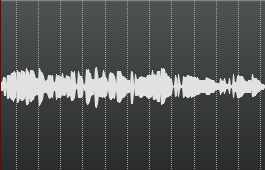
Here is a picture of my playing an A minor pentatonic scale with forearm rotation elbow technique. So that’s two notes per string other than the turnaround with 3 notes per string on the high E string.
I’m much louder on the wound strings than on the plain ones. And you can see on the graph where the volume increases in the middle of the run where I am changing the angle of the pick slightly to come back through the scale.


